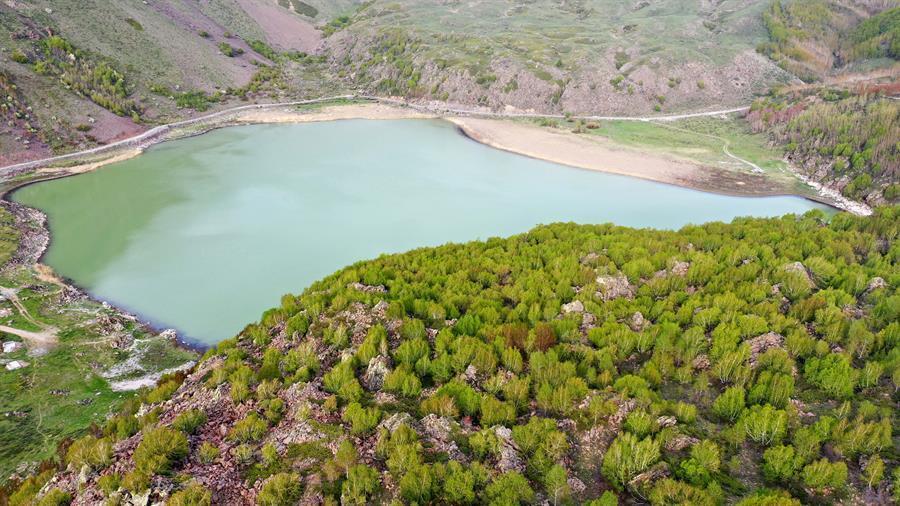
Efforts are underway to introduce the Nemrut Caldera, which is located at an altitude of 2,250 meters and welcomes thousands of local and foreign tourists every year in the eastern province of Bitlis’ Tatvan district, to the world by including it in UNESCO’s Global Geopark Network.
Yıldırım Güngör, associate professor from the Istanbul University’s Geological Engineering Department, and academics from Bitlis Eren University (BEU) are continuing their research in and around Nemrut Crater Lake within the scope of the “Bitlis Nemrut-Süphan Potential Geopark Area” project, initiated by BEU five years ago.
By examining the region, which stands out with its natural beauties, unique scenery, hot and cold lakes, ice cave, steam chimney and biodiversity, academics are trying to identify the stone and soil structure, vegetation, endemic plant species and geomorphological features of the caldera.
In line with the reports to be prepared as a result of scientific studies that have been largely completed, it is being planned to apply to UNESCO for the inclusion of Nemrut Caldera, which received the “ Excellence Award” within the scope of the European Destinations of Excellence (EDEN) Project in the Global Geopark Network.
With the approval of the project, it is aimed to make Nemrut Crater Lake, which has a great contribution to tourism in the region, a world-renowned place.
Speaking to the state-run Anadolu Agency, BEU Rector Professor Necmettin Elmastaş said that within the scope of the project, academics carried out scientific studies in geological and geomorphological fields in and around the Nemrut Caldera.
Elmastaş said that some application areas should be created for Nemrut to become a geopark after the scientific studies were completed.
“A new project should be developed, and roads, pathways and geosite areas should be determined without harming the natural environment. After these are finished, an application will be made to UNESCO. We plan to apply to UNESCO in 2022. If there is no problem in 2023, UNESCO will inspect this place, and then it will be on the list. When it is listed, it will gain the title of an international geopark,” Elmastaş said.
“Kula Geopark is currently the only geopark in Turkey. If we can complete this work, the Nemrut Caldera will be the second geopark in our country. People from other countries will be able to come and visit the Kula and Nemrut geoparks by looking at the UNESCO geopark list, even if they do not know Turkey. In this way, maybe thousands of people will come, and a serious contribution to tourism will be made here,” he added.
Rich elements for geopark
Elmastaş stated that there were geosite spots, steam chimneys and cold caves besides hot and cold lakes in the Nemrut Caldera, which was formed as a result of a volcanic eruption. It is a very valuable place in terms of geology and geomorphology and attracts the attention of scientists, he added.
Emphasizing that in addition to these features, human elements are also important for the geopark, Elmastaş said, “Mount Nemrut and its surroundings are a very rich area not only with natural environment elements but also with human elements. There are very rich elements to become a geopark. Academics determined not only the Nemrut Volcano, which we consider a geopark, but also the nearby spots as geosites. We will revise this again. The starting point for this will be the El-Aman Inn. Those who want to go to Nemrut will come to El-Aman Inn first, and then they will reach the geosite areas in and around Nemrut.”
Elmastaş said that within the scope of the project, places, where people can meet their needs, should be built at the entrance of the caldera in order not to deteriorate the natural environment, adding, “All elements in Nemrut are being examined. Stone, rock, soil structure, vegetation and fauna as a whole there. Along with these, human activities, that is, the products produced by people in the surrounding villages, complement the elements of the geopark.